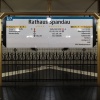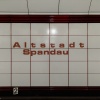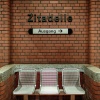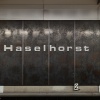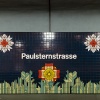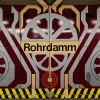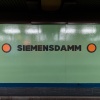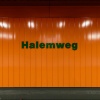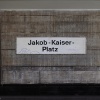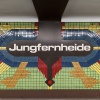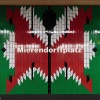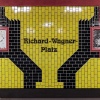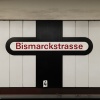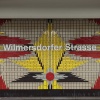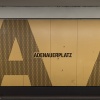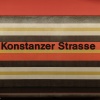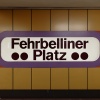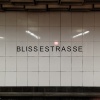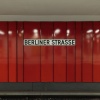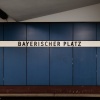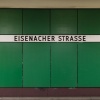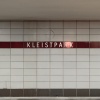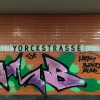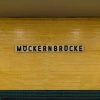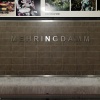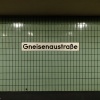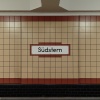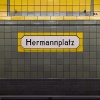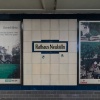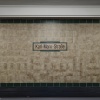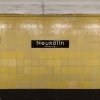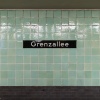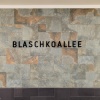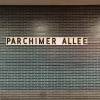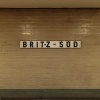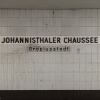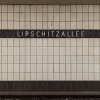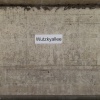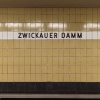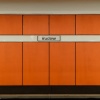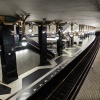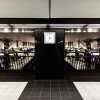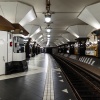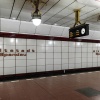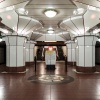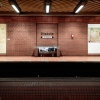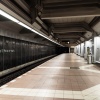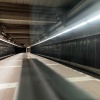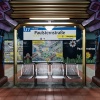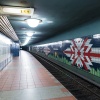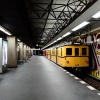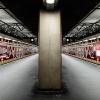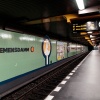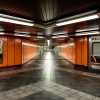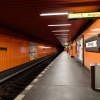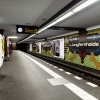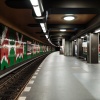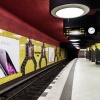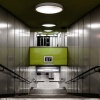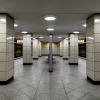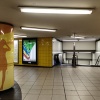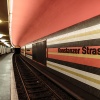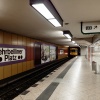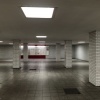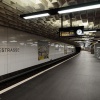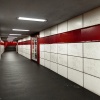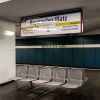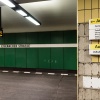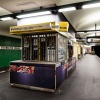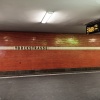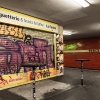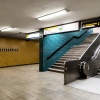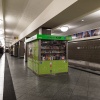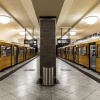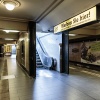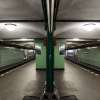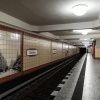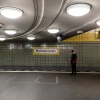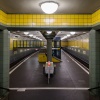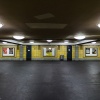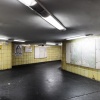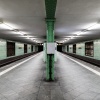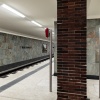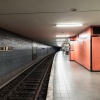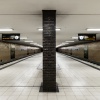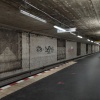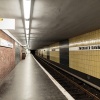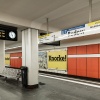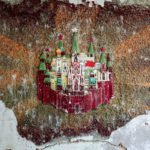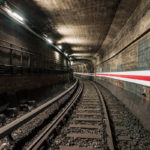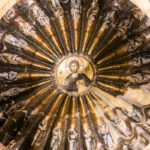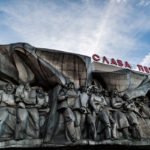Germany’s longest real Underground – Berlin’s U7
Number 7 among Berlin’s undergrounds can score with the superlative of having the longest subsurface leading route of Germany’s metros, that is a 31.8 kilometres long tunnel, which was even the most sprawled out tunnel in the world from 1984 to 1988. From northwestern Berlin (Rathaus Spandau) to the southeastern end of the city, that is Rudow, a ride on the U7 needs almost one hour travel time. It diagonal route through the city leads through former West Berlin only and stops at historic gems like Hermannplatz, an underground cathedral being built in 1926. Through the years it got extended several times like modern designed stations Rohrdamm or Mierendorffplatz show, making the U7 so interesting and inspiring that you can even find it in computer games.
With a tunnel tube leading 31.8 kilometres through the underground of Berlin the U7 is Germany’s longest real underground as Hamburg’s U1, that is longer, runs mostly aboveground. With neighbourhoods like Wilmersdorf and Charlottenburg plus Gropiusstadt and Siemensstadt the U7 line connects not only Berlin’s good middle-class but also areas for the working-class. Hence it is no surprise that among Berlin’s Us the 7 has the highest volume of traffic.
Like every other of Berlin’s Us the fewer passengers on the weekends slows down the light blue coloured U7 to a 10 minute rhythm. That pretty much inflates the time being needed for my photo project, as the U7’s station count and length makes stopping at every station and using only the time between two succeeding trains become a veeeeery long story, if not to say theoretical 7.5 hours long. That’s why the 7 is the only Berlin line I shot on two different days, also because to have the construction work at the southern end of the line more less finished.
Like many other Berlin lines the U7 is the baby of two of the most influential engineers and designers in Berlin history. The Swede Alfred Grenander for example created the underground cathedral at Hermannplatz and its direct connection to Karstadt department store. He is the mastermind behind the historic part of U7, the tunnel between Mehringdamm and Grenzallee. In the 1960’s, when most of the new and modern stations got built and opened it was Rainer G. Rümmler who refined the idea of every station having a colour code. For example the green at Eisenacher Straße is a reference to Thüringer Wald, the large forest surrounding the city of Eisenach. When being honest, then the idea of colour codes works even today quite well :-)
Construction works of the U7 began in 1921. Back then it was mostly about planning but in 1924 things got definitely kicked off and the tunnel leading to Neukölln got dug. Highlight of that track section was and definitely still is the two-story sized station Hermannplatz, an underground cathedral starting its operation in 1926. It was the first German underground station with escalators and had a direct connection to the Karstadt department store. The track section from Hermanplatz to Bergstraße station, today’s Karl-Marx-Straße, was the first part of Berlin’s subway that could start operation again after the World War 2, only 7 days after capitulation.
Since 1993 the historic tiles of Hermannplatz, when the station got a through and through renovation, are shining in new yellow and blue-grey splendour again. Right above the station sits Karstadt, a large department store building. Back then that company revolutionised trading by accepting no more bonds but cash only, but those times are over as it get shunt from one parasitic finance investor to another.
The underground station was not less revolutionary as it offered a direct access to Karstadt‘s department store, which got opened in 1929, that is later than the station, but already when first design works started there was the idea of a direct department store access. It wasn’t London’s Harrods nor Paris’ La Fayette but Berlin’s Karstadt at Hermannplatz being the largest department store of its time.
Berlin grew, in particular in the nortwestern area of Spandau as well as in the southeastern area of Britz. The latter neighbourhood saw a major settlement in the 1960’s when Gropiusstadt got built, a commuter town being named after architect Walter Gropius and accommodating some 36.000 people. The quarter came to fame by Christiane F.’s autobiography “Wir Kinder vom Bahnhof Zoo”. Due to Gropiusstadt’s functional character, and very high count of council flat Gropiusstadt was virtually the Marzahn of West Berlin. It is the task of U7 to connect this district with the western city centre around Zoologischer Garten.
Drilling the tunnel towards South East was one expansion direction of U7, the other one was its extensions to the North West, which began in the 1960’s at Mehringdamm station. At Mehringdamm the former U7 usually ended. Since emancipating itself it is not only an arm of the North-South connection anymore, that is today the U6.
During the years the U7 tunnel got extended more and more towards Spandau, shaking hands with another centre of labour, Siemensstadt. On October 1st, 1984 works got finished and the U7 started its operation along the course that is known until today.
Except Hermannplatz the stations along the historic U7 track section from Mehringdamm to the south are more or less unspectacular and functional, but when riding from Mehringdamm towards Spandau things become interesting as the chronology of tunnel works becomes apparent and stations appear more and more futuristic as well as colourful. That is not Grenander’s but Rümmler’s work, another influential architect in Berlin history. Between Wilmersdorf and Rathaus Spandau some stations look as if Rümmler pretty much rode his hobbyhorse. Rathaus Spandau is so large that it even scratches the pathos of Hermannplatz.
What would our ancestors have thought if they would have knews how wide-spread the U7 will become one day…
